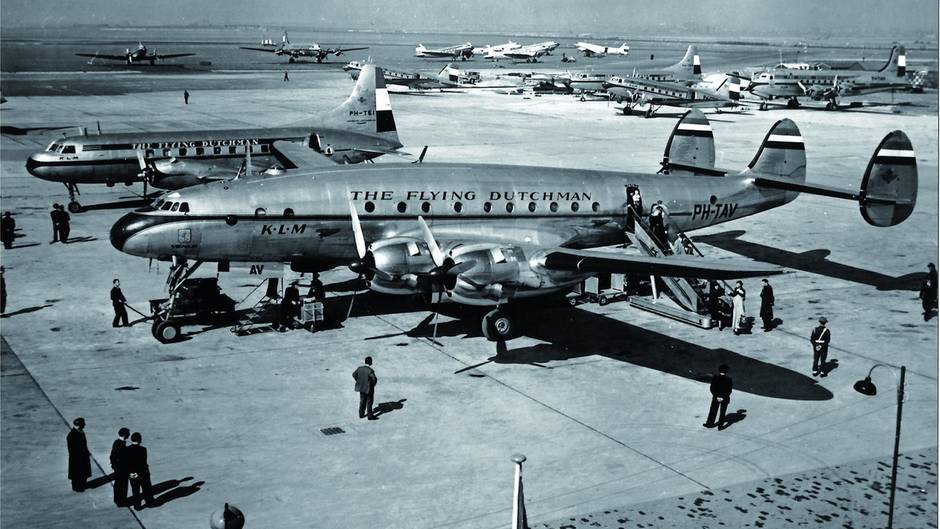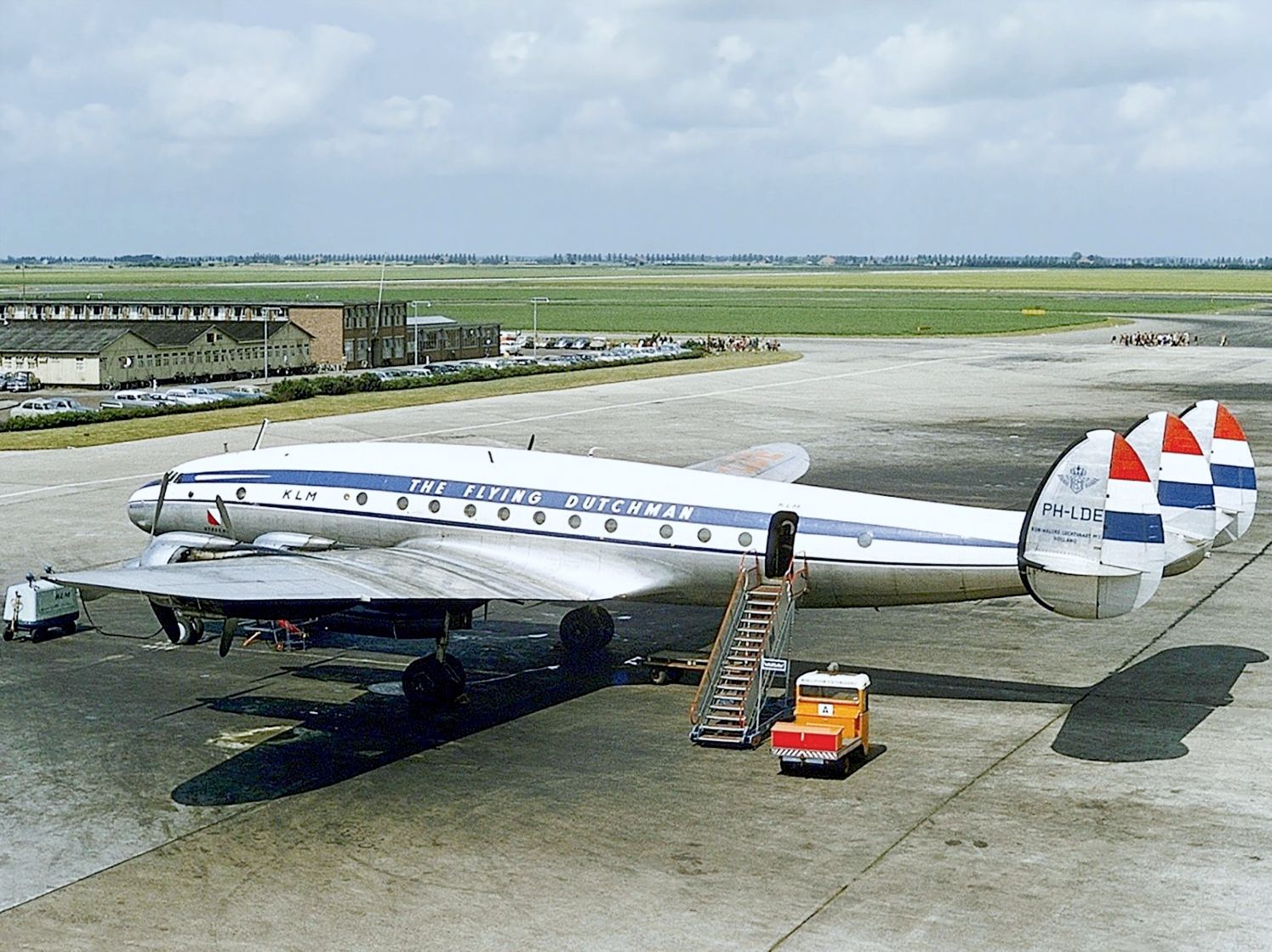
Type: Lockheed PV-2
Program: FS2004 and FSX
Model: Milton Shupe
Operator: Marine Luchtvaartdienst(Dutch Naval Service)
Download: Complete aircraft
The PV-2 was developed from the Lockheed Ventura PV-1. From 1944 onwards more than 500 were produced for the US Navy and deployed as a maritime reconnaisance and patrol bomber. At the end of WII, the PV-2 half of the US Navy patrol squadrons were already equipped with the PV-2 and after the war the aircraft became the standard maritime reconnaisance and patrol bomber of the US Navy. NATO was established in 1949 and the Netherlands was asked to participate in NATO maritime protection program of the North Sea, The Channel and the northern part of the Atlantic Ocean. The Netherlands had no money to buy the required aircraft.
The MDAP (Mutual Defense Assistance Program) provided a solution. The USA offered for the time being 18 PV-2s till the Netherlands later could replaced them by the more modern Lockheed P2V-5 Neptune. After the training of crews the USA the aircraft were flown to the Dutch Valkenburg Air Base at the end of 1951. Until 1955 they were used for OSRD tasks until they were replaced by the Lockheed Neptunes. The PV-2s were then transferred to Portugal.
Type: Lockheed L-10A
Program: FS2004 and FSX
Model: FS Design Berlin
Operator: RNethAF
Download: Compleet aircraft
A year after the Lockheed 10 Electra was introduced, Lockheed started to develop a smaller version with the same engines, the Lockheed model 12 Electra Junior. The first flight took place in June 1936. From model 10 the military version 212 and a little later the L-12A was developed. The Marine Aviation Service of the Dutch East Indies Army(ML-KNIL) was the first customer and ordered at the end of 1938 12 aircraft of the version 212. From the beginning of 1940 they were used as a trainer, light bomber, exploration- and liaision airplane. The ML-KNIL eventually had 16 212s and 20 L-12a in its fleet. During the Second World War a few were confiscated by the Japanese and a few were flown to Australia and got into service with the RAAF. The Royal Netherlands Military Flying School at Jackson Air Force Base in the USA employed L-12A for the training of Dutch war pilots. After the war, five employed by Transport command of the NethAF at Valkenburg. In 1951 the last three were sold to Sweden. The L2-38 of the National Military Museumis the former T-2, sold to Sweden, resold to Denmark and repurchased by the National Military Museum for restoration. A total of 130 Electra Juniors were built in five different versions. The Lockheed in National Military Museum in Soesterberg is of course an L-12A. Unfortunately, no freeware model is from the L-12A available.I therefore used the L-10 model of FS Design Berlin as an alternative.
Type: Lockheed L-749 Constellation
Program: FS2004 and FSX, pack with 6 repaints
Model: Manfred Jahn
Operator: KLM
Download: Complete aircraft
As early as 1939, KLM bought 4 Excaliburs Model L-044 from Lockheed, together with 4 aircraft of the larger and faster Constellation L-049 from the drawing board for new long-distance lines across the Atlantic to New York. The Excalibur resembled an enlarged 4-engine Model 10 Electra with a capacity for 36 passengers and a cruising speed of 431 km/h. Howard Hughes had acquired a majority stake in the airline TWA. He rejected the Excalibur because he wanted a larger, four-engine, pressurized aircraft that could cruise faster than any other large passenger aircraft and fly at much higher altitudes, beating all competitors. The Excalibur project was canceled to focus on the Constellation. The Second World War threw a spanner in the works. Civilian development was halted to give priority to military production. The first Constellation made its first test flight on January 9, 1943. Due to mainly engine problems, only a few dozen of the military version were used during the war. Immediately after the war the first commercial model was put into service by TWA in November 1945. In mid-1946, KLM received the 4 L-049s that had already been ordered before the war, making it the first European airline to fly this type. In 1947, 2 more were added. KLM bought another 20 of the improved L-749 from 1947 to the end of 1950. Lockheed developed a Speedpack for the Constellation, a external container with a length of about 10 meters and a volume of 11 cubic meters that could be placed under the fuselage to carry a maximum load of 3,700 kg. With Speedpack the cruising speed was only 20 km/h lower while the range was about 4% less.KLM bought 7 Speedpacks. The PH-TAV "Venlo" was one of 6 L-049's which KLM had in its fleet from 1946 to 1950. It was sold to Capitol Airlines in the USA.
The PH-TDK "Amsterdam" was one of 20 L-0749s which KLM had in its fleet from 1947 to 1960. In November 1959 it was withdrawn from service and scrapped in 1963.
Type: Lockheed L-188c Electra
Program: FS2004 and FSX, pack with 2 repaints
Model: Mike Stone
Operator: KLM
Download: Complet aircraft
The Lockheed L-188c Electra PH-LLG was in KLM-service from February 1960 till January 1969. In the summer of 1968 leased by Martinair Holland. Sold to Universal Airlines USA. After that it was in service with a lot of other airliners mainly as a freigther. Last owner in Europe was Atlantic Airlines in the UK and in service till 2010. In february 2011 it went to Conair in Canada. Today's status ?. A remarkably reliable aircraft with a lifetime of 50 years of service
Type: Lockheed L-1049H Super Constellation
Program: FS2004 and FSX
Model: Mike Stone
Operator: KLM
Download: Complete aircraft
KLM Royal Dutch Airlines had 23 Lockheed Super Constellations in its fleet from 1953 till mid 1962.(9 C's, 4 E's, 6 G's and 3 H's) The latest version L-1049H was a combiplane(mixed freight and passengers) with two freightdoors. The three L-1049H's of the KLM entered service in 1958 and due to the arrival of the DC-8's from 1960 onwards, out of service in 1962. Its R-3350 engines were complicated and difficult to maintain. Partly because of this and the arrival of the first generation jetliners, the second hand L-1049 were nearly unsalable. The PH-LKN was the last L-1049H in the KLM-fleet and out of service in July 1962. Eventually it was sold in Mai 1966 to Flying Tiger Line in the USA.
Type: Lockheed L-188c Electra
Program: FS2004 en FSX
Model: Mike Stone
Operator: Martinair Holland
Download: Complet aircraft
The Lockheed L-188c Electra PH-LLG was in KLM-service from February 1960 till January 1969. In the summer of 1968 leased by Martinair Holland. .
Type: Lockheed C-130H Hercules
Program: FS2004 and FSX
Model: Mike Stone
Operator: Royal Netherlands Air Force
Download: Complete aircraft
Since 1994 The Royal Netherlands Air Force has two Lockheed C-130H-30 in its fleet. This is an extended version of the Hercules with 2.54 meters in front of the wing and 2.03 meters behind the wing. In 2010 another two second-hand C-130H, a non-extended version, were added. These replaced four Fokkers F 60 whose transport capacity was found to be too small. The C-130Hs were first overhauled and modernized in the UK before they joined the RNAF. It is expected that all C-130's will be replaced from 2026 onwards. A choice has yet to be made for the replacement. The aircraft are stationed at Eindhoven Air Base.
Type: Lockheed L-382G Hercules
Program: FS2004 and FSX
Model: Mike Stone
Operator: Schreiner Airways Cargo
Download: Complete aircraft
In 1986, the Schreiner Group decided to start a new subsidiary which focused on the freight market. They started with a single Dornier 228, soon added by two second-hand Fokker F27-400s.From 1999 to 2001 it also had three Airbus A-300B4s in its fleet, from 1997 until 1999 a single Lockheed L-382G and from 1994 till 2002 a De Havilland DHC-8. The PH-RMH was leased from Safair Freighters of South Africa and used for a subcharter of KLM.
1946
1946 speedpack
1950
1955
1950 speedpack
1955 speedpack
1960
1962




























